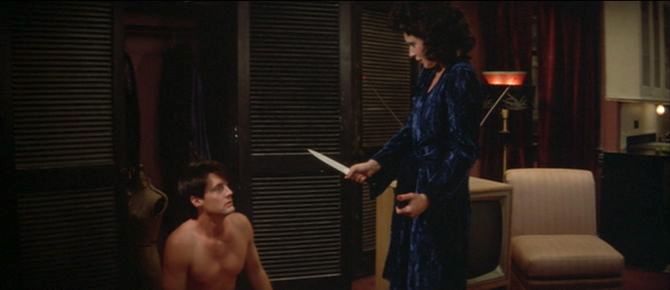 Back to selection
Back to selection
The Blue Velvet Project
Blue Velvet, 47 seconds at a time by Nicholas Rombes
The Blue Velvet Project, #51

Second #51, 39:57
What is this world?
Like piecing together a puzzle over an abyss, we are witnessing the scene of a crime conveyed in secret code. We know, of course, that Dorothy will not kill Jeffrey, but somehow this fact only makes matters worse. The murderers and the murdered.
In her never-out-of-date book Window Shopping: Cinema and the Postmodern, Anne Friedberg writes that
as soon as the photographic negative made possible a standardized image, photography and then cinematography made possible the seeing of exactly the same image(s) over time. Film experiences had an unprecedented repeatability. . .
This notion of repeatability, it haunts films like Blue Velvet, which dives so deeply into the cold green waters of Hollywood’s past only to bring to the surface new and strange and alien configurations of the familiar stories. Is there such a thing as a memory-film? Does it matter if our stories are really stories, or “just” stories?
Is there a difference?
Dorothy holds that knife like a gladiator, full of right-to-left-screen confidence, defusing every bomb in Jeffrey’s mind. The frame is all angles and lines of vision: the invisible line between Dorothy’s and Jeffrey’s eyes, interrupted by the tip of the knife, which bisects the screen at a right angle from their connected line of vision, and for just one moment (between blinks) the frame becomes a snapshot of figures in a wax museum: what story do they tell that we haven’t already told ourselves?
Which is to say: Blue Velvet is the most familiar—and hence most terrifying—film ever made.
Over the period of one full year — three days per week — The Blue Velvet Project will seize a frame every 47 seconds of David Lynch’s classic to explore. These posts will run until second 7,200 in August 2012. For a complete archive of the project, click here. And here is the introduction to the project.
